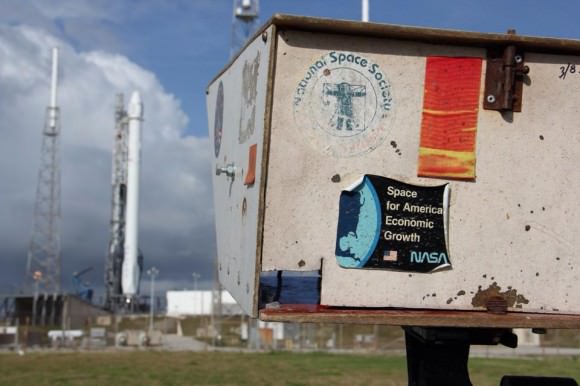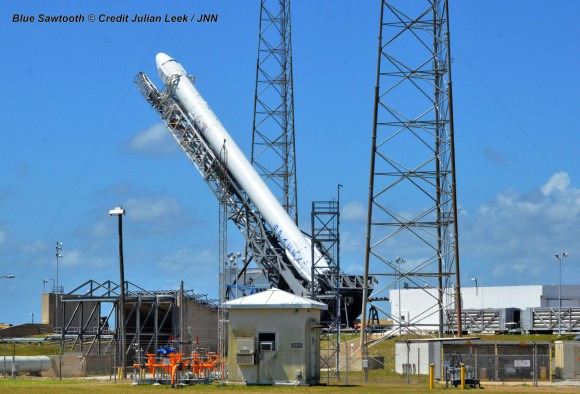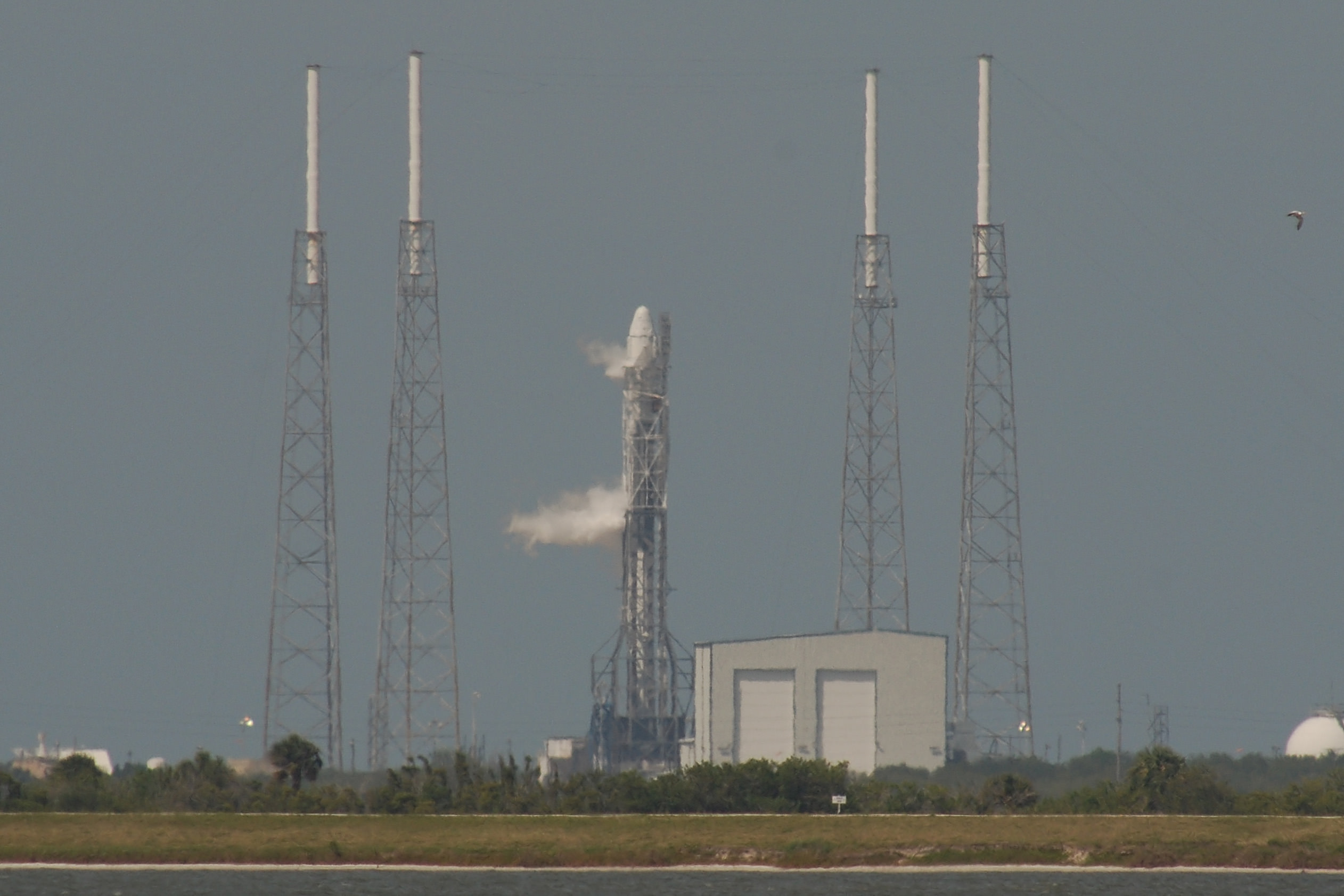NASA and SpaceX are marching forward towards a Friday, April 18 liftoff attempt for the Falcon 9 rocket sending a commercial Dragon cargo craft on the company’s third resupply mission to the International Space Station following the scrubbed launch attempt on Monday, April 14 – forced by the discovery of a Helium gas leak inside the rocket during the latter stages of the countdown.
An on time blastoff of the upgraded Falcon 9 sets the stage for an Easter Sunday rendezvous and berthing of the Dragon resupply spacecraft at the massive orbiting outpost packed with almost 5000 pounds of science experiments and supplies for the six person crew.
However the weather prognosis is rather iffy for Friday afternoons launch attempt at 3:25:21 p.m. EDT from Space Launch Complex 40 at Cape Canaveral Air Force Station in Florida.
Forecasters predict only a 40 percent “GO” of acceptable weather conditions at the appointed liftoff time of the SpaceX-3 mission – roughly the time when the Earth’s rotation moves the rocket into the plane of the space stations orbit.

Meteorologists with the U.S. Air Force 45th Weather Squadron are predicting a significant chance of rain showers and thunderstorms in the Florida Space coast launch area that could violate three launch rules, namely the Thick Cloud, Lightning and Flight Through Precipitation rules.
In the event of a scrub for any reason on Friday, NASA, SpaceX and Air Force managers approved another backup launch opportunity on Saturday, April 19 at 3:02:42 p.m.
The weather outlook for a Saturday liftoff improves somewhat to 60 percent “GO”.
Originally, Monday and Friday were the only available launch target dates this week.

Assuming a successful Falcon 9 launch on Friday, station crew members Rick Mastracchio and Steven Swanson will grapple the Dragon cargo freighter with the 57 foot long Canadarm2 on Easter Sunday morning, April 20, at 7:14 a.m. at then berth it at the Earth-facing port of the Harmony module.
You can watch the launch live on NASA TV: http://www.nasa.gov/ntv
NASA TV live coverage will begin at at 2:15 p.m. EDT
SpaceX live launch coverage begins at 2:45 p.m. ET: Webcast at www.spacex.com/webcast
NASA TV coverage of the Easter Sunday grappling process will begin at 5:45 a.m. with berthing coverage beginning at 9:30 a.m. : http://www.nasa.gov/ntv
Monday’s launch attempt was scrubbed about an hour before liftoff when SpaceX mission controllers and engineers detected that a helium valve in the pneumatic system for stage separation between the first and second stages was not holding the specified pressure.
The success of the mission was therefore dependent on the perfect operation of a backup check valve for the stage separation pistons.
Although no technical issues were detected with the backup valve, the anamolous situation violated SpaceX launch rules.
“SpaceX policy is not to launch with any known anomalies,” said SpaceX in a statement.

The erect Falcon 9 was lowered back to the horizontal position so that SpaceX engineers could swap out the faulty helium valve, as well as conduct a complete inspection of the rocket to look for signs of any other issues that may have contributed to the valve not working as designed, said SpaceX.
This unmanned SpaceX mission dubbed CRS-3 will deliver some 5000 pounds of science experiments, a pair of hi tech legs for Robonaut 2, a high definition imaging camera suite, an optical communications experiment (OPALS) and essential gear, the VEGGIE lettuce growing experiment, spare parts, crew provisions, food, clothing and supplies to the six person crews living and working aboard the ISS soaring in low Earth orbit under NASA’s Commercial Resupply Services (CRS) contract.
To date SpaceX has completed two operational cargo resupply missions and a test flight. The last flight dubbed CRS-2 blasted off a year ago on March 1, 2013 atop the initial version of the Falcon 9 rocket.
NASA awarded contracts to SpaceX and competitor Orbital Sciences to develop unmanned cargo freighters via CRS to restore US capability to resupply the ISS following the shutdown of the space shuttle program in 2011.
SpaceX is under contract to NASA to deliver 20,000 kg (44,000 pounds) of cargo to the ISS during a dozen Dragon cargo spacecraft flights through 2016 at a cost of about $1.6 Billion.
The next launch of Orbital Sciences Antares/Cygnus commercial rocket to the ISS from NASA Wallops, VA, is tentatively slated for May 6. But the target date hinges on when this SpaceX-3 mission actually flies and could slip into mid-June.
Stay tuned here for Ken’s continuing SpaceX, Orbital Sciences, commercial space, Orion, Chang’e-3, LADEE, Mars rover, MAVEN, MOM and more planetary and human spaceflight news.

